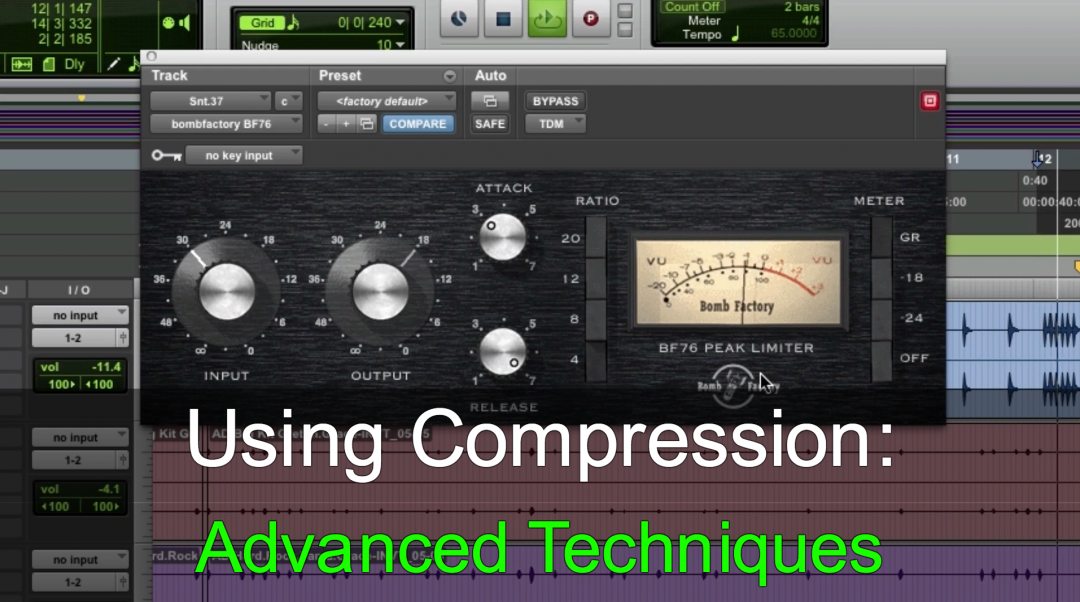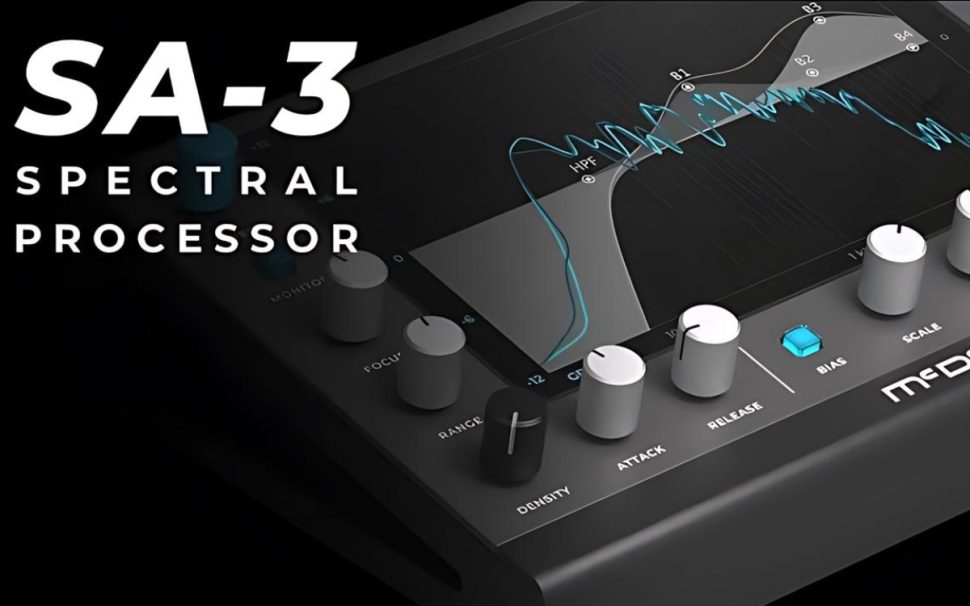Hi Friends, I hope you’re doing marvellously well!
In today’s tutorial I’m showing our Recording Connection apprentice Natalie (and you!) some advanced techniques for using compression to increase the energy of your songs and make your instruments work well together in the mix.
Topics discussed in this tutorial:
- Using multi-stage compression to maintain a natural sound
- Setting the right attack and release times
- Using compression to add excitement to acoustic guitars
- Compressing overheads to make them sound like room mics (if no rooms were recorded)
- Remove drum bleed and clean up your drum sound by using sidechain compression
- Using compression to improve interaction between instruments and make them work well together in the mix.
- Make your kick and bass sit nicely together for a powerful and punchy low end.
Watch more compression tutorials:
Want to take your recordings and mixes to the next level?
Check out Produce Like A Pro Academy for in-depth tutorials, multitracks, mix feedback and more:
I hope you enjoyed this tutorial. Please leave any questions and comments you may have below. As ever, thank you so much for your wonderful support, comments and feedback!
Have a marvellous time recording and mixing,
Warren






Interesting to hear that in the “days of tape”, everything was compressed and EQd as it was recorded, then the mix was constructed just by setting the faders to the right levels. You had to commit to the sound as it was captured, not as it was played back. Reminds me, Warren, of an interview you did with CLA in which he moaned about people sending him songs to mix, and nobody (band members or producers/engineers) had committed to anything! The guitars were all clean, the drums all dry and unmixed, the keyboards were (presumably) just MIDI notes and the vocals completely uncompressed and bone dry! In other words, EVERYTHING except the notes played had to be decided on mixdown, leaving CLA to make all the decisions! I got the impression he’d rather have had some degree of commitment from the band as to what they wanted, rather than relying on his artistic and technical decisions to sort it all out for them.
Back in the 1980s, here in the UK we had three television channels (BBC1, BBC2 and ITV). That was it. No sports channel, no comedy channel, no film network. Just those three. And yet the whole family would sit round the TV set all evening, watching item after item. Now we have 120 channels… and there’s nothing on! It’s the agony of choice, of course. Too many options!
Hi @disqus_O1gaaZ0Wzm:disqus, exactly! The great albums we grew up listening too were made by committing to a sound so you could create the song the way you wanted to hear it! I remember only having BBC1, 2 and ITV clearly! That was throughout the 70’s and then in the early 80’s I remember Channel 4 being launched! That was a huge deal! Have a marvellous time recording and mixing, many thanks Warren
Grease Pencil = Chinagraph Pencil. Also ducking the delay on a vocal as an effect, allowing the vocal not to be garbled, but the delay heard at a nice level following the vocal. there are so many options compressor expanders gates have that we don’t need to use often enough. We can forget they exist,,, well I can , lol,,,
Great to learn new options, and be reminded of options we have,,,
Thanks Warren 😀
Hi @plap-disqus-7ef605fc8dba5425d6965fbd4c8fbe1f:disqus agreed! Yes! Chinagraph pencil! Glad to be able to help! Have a marvellous time recording and mixing, many thanks Warren
Wonderful discussion. Thanks Warren and thanks Natalie. I never had the pleasure(?) of cutting tape, but many of my friends were very handy with a razor blade. A guy I worked with tells me of cutting out long strips of vocal tracks in middle of tape. Sounded nerve-wracking. Love the basic info about compression and side-chaining, it really helps to hear this stuff multiple times as I’m a bit thick sometimes. 🙂
Hi @plap-disqus-2e65f2f2fdaf6c699b223c61b1b5ab89:disqus thanks for your great comment! I’m really glad you enjoyed the video! I used to be terrified of cutting tape, but I still did it! Have a marvellous time recording and mixing, many thanks Warren
Great video, Warren. More of these discussions of techniques would be most beneficial to my understanding the use of all plugins types.
I’m interested in how the threshold indicator of a compressor control relates to the average and/or peak levels of a track or mix. For example, if my snare transients are peaking at -3db and I want to compress to a -6db to be more closer to the rest of my mix, do I set the threshold to somewhere close to -3? Or -6db? Or, perhaps something completely different?
Hi Skorst,
thanks for your comment! If you want the signal to peak at -6db and you have a limiter (or a compressor with a very high ration 20:1 and up), you would set the threshold to-6 db. That way the compressor will gain down everything that goes above -6db at a very high ratio, essentially not letting any signal peak below -6 db. If you have a medium ratio between 2:1 and 4:1 you might need to set the threshold lower, since the gain reduction above -6db is not as impactful with a lower ratio.
The amount by which the signal is reduced is determined by the threshold AND the ratio in conjunction. Please read up on that online, I’m sure there are many sources who will explain it. Also remember that the attack setting has an influence on where the signal will peal. If you have a long attack time, most of the transient will go through pretty much unaltered.
I hope this helps.
Best Regards
Sam
Thanks, Sam. That ties together with what Warren was talking about in the video with Natalie. I just always wondered why compressors without a fixed threshold have markings for adjustment of, for example, -35db to 0db, and what the threshold setting selected related to the amount the signal is compressed. ~ steve
Hi @plap-disqus-6c4b761a28b734fe93831e3fb400ce87:disqus great point! A lot of older hardware compressors have markings that I would say were more ‘suggestions’ than actual facts! haha For instance the DBX160 VU is one of my favourite compressors and before the needle moves indicating compression it already is compressing! It’s an amazing compressor, a classic piece of hardware, I use my ears only with it! Have a marvellous time recording and mixing, many thanks Warren